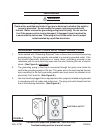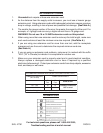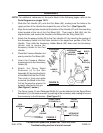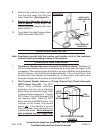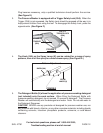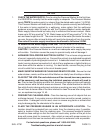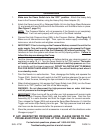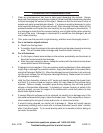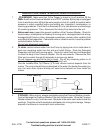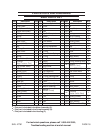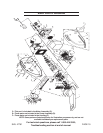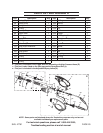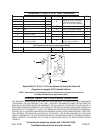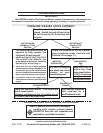
SKU 47761 PAGE 16
For technical questions, please call 1-800-444-3353;
Troubleshooting section at end of manual.
CLEANING RECOMMENDATIONS
1. Clean an inconspicuous test area to help avoid damaging the surface: Always
begin with the fan spray at a distance of about 3-5 feet from the surface being cleaned
to avoid damaging the surface of the object. Make sure that the test area is clear of
people and water prone/delicate objects. If a pressure washing detergent is to be
used, apply the detergent to this area as well. After cleaning this area, switch off the
pressure washer and inspect the area carefully for any damage or discoloration. If
any damage is noted from the pressure setting, use a lighter setting when cleaning
the rest of the area. If damage or discoloration is noted from the detergent, do not
use it when cleaning.
2. First, pass over the area with a light cleaning, and then more thoroughly clean it.
3a. For a
vertical
or
sloped
surface:
a. Wash from the top down.
b. If possible, direct the stream in the same direction as the slope towards a draining
area. This will enable better drainage and therefore better cleaning.
3b. For a
flat
surface:
a. If a thin layer of water accumulates on the surface, periodically use the stream to
direct this water towards the drainage.
b. After the major cleaning is done, sweep the surface with the stream to help direct
loose debris toward the drainage.
4. If detergent is to be applied: Only use pressure washing detergent; other detergents
might clog or damage the pressure washer. Apply the detergent at low pressure by
using the Detergent Bottle (H). Allow the detergent several minutes to sit and soak
into the work surface; this will improve cleaning efficiency. Make certain to rinse off
all detergent completely.
5. Hold the Gun Assembly at about a 45° angle and steadily sweep the stream back
and forth; if a severe, head-on angle is used, dirt may imbed in the surface being
cleaned. Follow a steady, consistent pace during cleaning; this will help prevent
stripes or discoloration afterwards. If streaking or uneven cleaning is noted at the
end of a project, go over the edges of the streaks with a wide fan pattern to help
blend these lighter areas in.
6. If several different surfaces are to be cleaned, be careful not to damage any of the
less solid surfaces while trying to clean the harder ones. This is especially a concern
when cleaning tile and grout, bricks and mortar, or stones and mortar.
7. If wood is being cleaned, be careful not to damage it. Wood will usually require
resurfacing (sanding) and re-coat with a surface protectant (wood, stain, varnish)
after it has dried again. Try to avoid leaving water on a wooden surface; doing so
can harm the surface.



